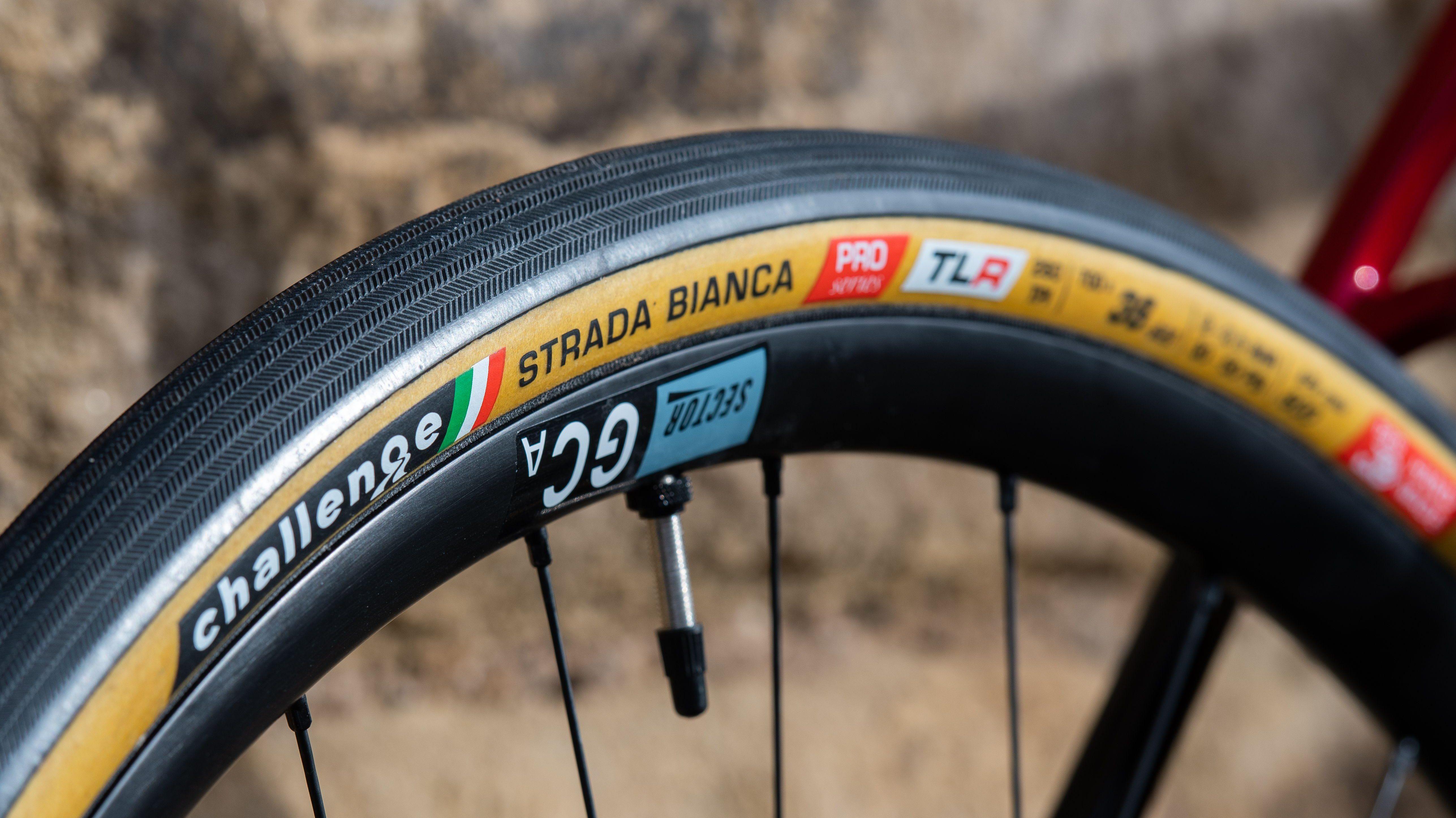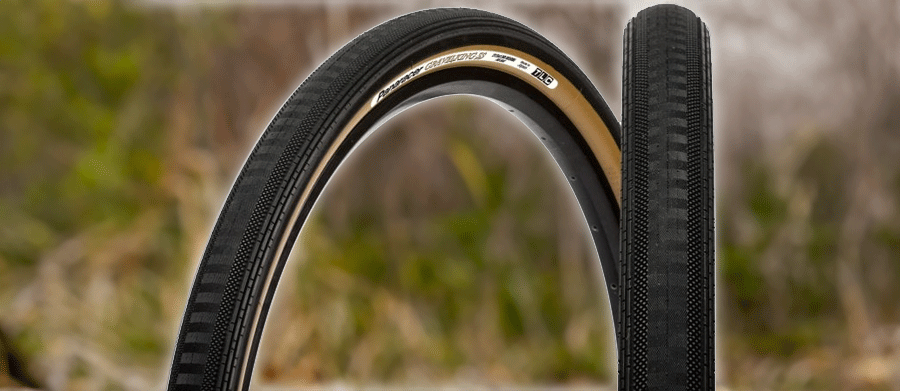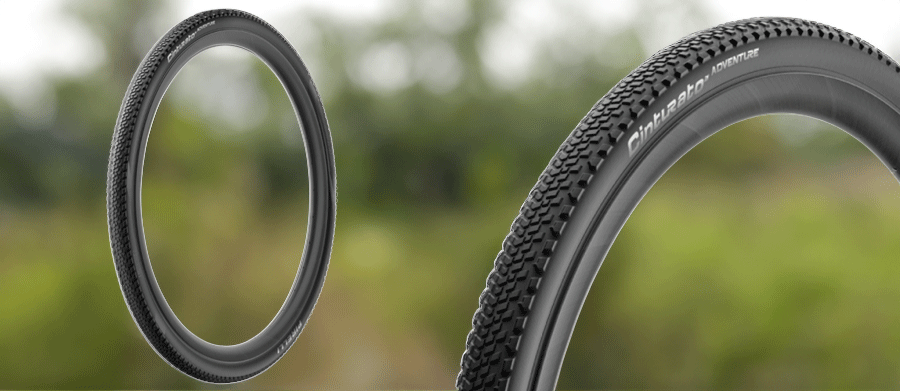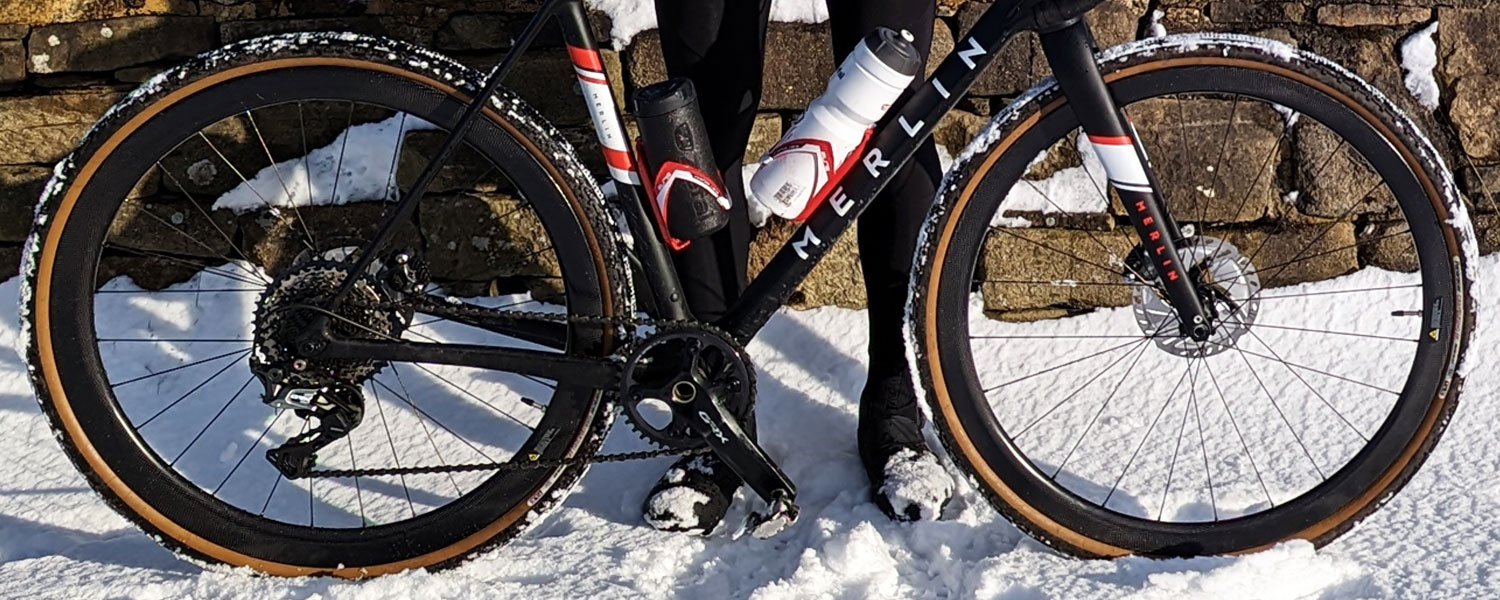Gravel riding has gained immense popularity in recent years, and for good reason. It offers a perfect blend of adventure and adaptability. One of the critical components that can significantly impact your gravel riding experience is the type of tyres you choose. You can adapt your gravel bike to suit your local terrain by simply changing your tyres!

In this guide, we’ll delve into the world of gravel bike tyres, exploring different types, their features, and how to choose the best ones for your riding style.
Slick Tyres: Speed and efficiency…

Slick tyres, are ideal for gravel riders who spend a significant amount of time on paved cycle paths and roads. These tyres provide lower rolling resistance, making them efficient on smoother surfaces. They are a great choice for gravel cyclists who prioritize speed and performance over rugged or muddy riding.
Perfect for dirt and gravel, the Challenge Strada Bianca combines exceptional puncture resistance with low rolling resistance. And with a handmade construction it also benefits from an excellent supple ride, offering improved comfort and grip over a variety of surfaces, as well as being available in 30mm to 45mm sizes.
Semi-Slick Tyres: A well balanced option...

Semi-slick tyres strike a balance between smooth and knobby designs. They feature a combination of a smoother centre tread for speed on hard surfaces and slightly more aggressive side knobs for improved traction on loose or uneven terrain. This versatility makes semi-slick tyres a popular choice for riders who encounter a mix of road and gravel conditions.
The Panaracer Gravel King Semi Slick TLC is designed as a dryer condition or race day ready and fast rolling tyre, the Semi Slick is made for those riders who want to go fast while maintaining great control, traction and climbing prowess.
Knobby Tires: Designed for adventure and varied terrain…

Knobby tyres are the most aggressive of the three, featuring pronounced lugs or knobs. These tyres are designed for challenging off-road conditions, providing maximum grip and control on loose gravel, dirt, and trails. Knobby tires are perfect for riders who prioritize traction and stability in more technical and rugged environments.
Pictured above: Pirelli Cinturato Adventure Folding Gravel Tyre.
The Cinturato is lighter on the central part and more aggressive on the shoulder, the knobs are off-road oriented to promote rider support from light gravel to extensive trips. All coupled with the Pro Compound Gravel, a mix of polymers developed for an extended mileage. The combination of the tread design together with the compound prioritizes traction and grip on different surfaces designed to allow the rider to go everywhere.

Another worthy option which I’ve been using for a couple of years now is the Panaracer Gravel King SK TLC Folding Tyre (pictured above). The GK might just be the tyre you need for the more hardcore roads. Aggressive knobs, natural rubber compound, puncture protection breaker and a special low rolling resistance casing make the Gravelking a go-anywhere tyre.
Another crucial consideration is whether to opt for tubes or a tubeless set up…

Tubeless tyres, when paired with tubeless-ready rims, offer benefits such as reduced risk of flats, lower tire pressures for improved traction, and the ability to seal small punctures on the go. Opting for tubes, on the other hand, are more traditional and may be preferred by riders who prioritize simplicity and ease of maintenance.
Tyre Width and Pressure
Gravel bike tyres come in various widths, typically ranging from 28mm to 50mm or more.

Wider tires provide more stability and comfort on rough terrain, while narrower tyres may offer better speed on smoother surfaces. Finding the right balance depends on your riding preferences and the type of terrain you frequent. Always check the clearance on your frame also before running a tyre that is too wide.
That rounds up our guide to Gravel Bike Tyres! You can check out our full range of gravel tyres here.

